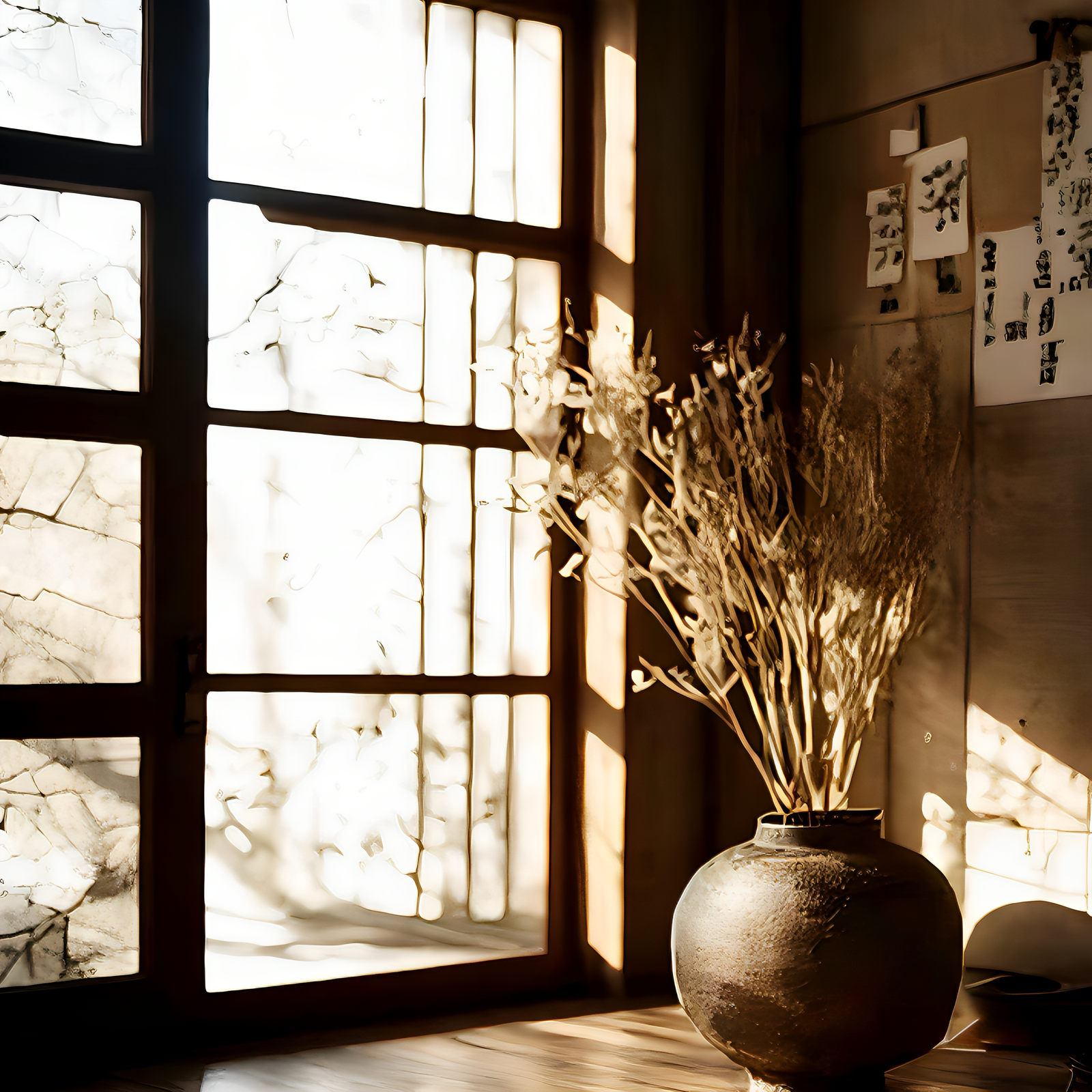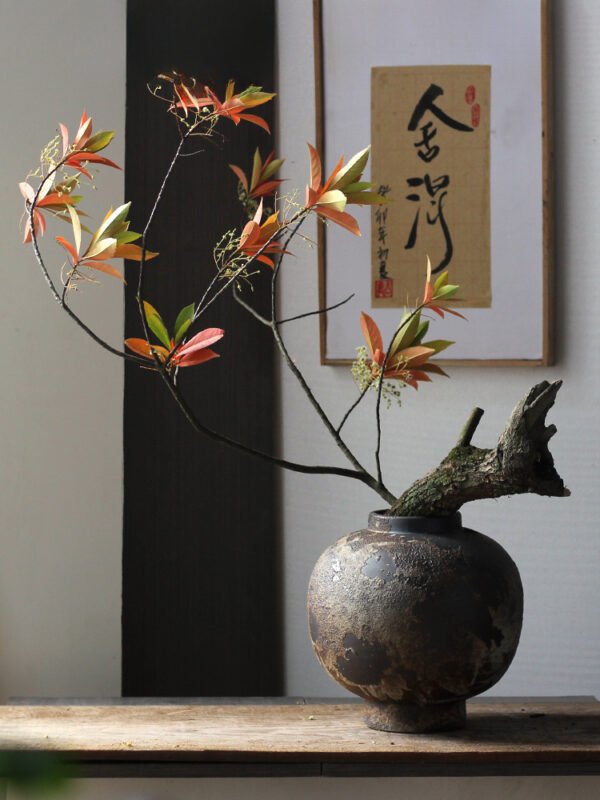Introduction: What Is Wabi-Sabi, and Why Is It Captivating the World?
In today’s fast-paced world, people are increasingly yearning for a home style that brings peace and introspection. Enter Wabi-Sabi, an ancient Japanese aesthetic philosophy that’s taking the globe by storm with its unique charm. Rooted in the celebration of nature, imperfection, and the passage of time, it embraces the idea that beauty lies in flaws. Whether it’s a sleek New York apartment or a vintage London cottage, Wabi-Sabi infuses spaces with a subtle yet profound elegance.
As an interior design enthusiast, have you ever struggled to create a home that’s both minimalist and soulful? Or perhaps, as a designer, you’re searching for a concept that blends cultural depth with eye-catching appeal for your clients? In this blog, I’ll dive deep into the essence of Wabi-Sabi, share practical ways to weave it into everyday living, and offer actionable solutions to tackle real design challenges. Plus, I’ll include some AI-generated image prompts so you can visually experience the allure of Wabi-Sabi firsthand.
Part One: The Core of Wabi-Sabi—Embracing Imperfection
Wabi-Sabi’s aesthetic springs from Japanese Zen culture, with its heart centered on accepting impermanence and imperfection. Picture a weathered wooden board, etched with cracks and faded marks from years of wind and rain, or a handmade clay pot bearing the subtle flaws of its firing process—these are treasures in the world of Wabi-Sabi, symbols of beauty in their raw, unpolished state.
How Can Natural Elements Be Blended Into Modern Homes?
Many clients crave a home that feels both contemporary and connected to nature but aren’t sure where to begin. Wabi-Sabi offers an ideal answer: by incorporating natural materials and handmade pieces, you can craft a space brimming with texture and character.
Solutions:
- Opt for Natural Materials: Choose minimally processed wood, stone, or bamboo. A wooden table with organic grain patterns or a rough-surfaced clay vase can instantly bring Wabi-Sabi’s essence into your space.
- Celebrate Flaws: Forget perfection. Select furniture with visible cracks or handmade ceramics with uneven finishes—these imperfections tell a story and add depth.
- Add Organic Greenery: Introduce plants with natural, untamed shapes, like a bonsai with curving branches or foliage in autumnal hues (think the orange-red twigs in the imagery). They breathe life into the room.

Wabi-Sabi Coarse Pottery Vase – Ancient Series| Handcrafted Antique Zen Aesthetic
One Percent Clay Wabi-Sabi Coarse Pottery Vase – Ancient Series
Deep gray-white coarse pottery, weathered like an ancient relic, adorned with Zen-inspired serenity. A masterpiece of craftsmanship—place it indoors and feel the raw essence of nature and the whispered echoes of old temples.
Part Two: Wabi-Sabi’s Colors and Light—Subtle Depth in Simplicity
Wabi-Sabi’s color palette draws inspiration from the earth, featuring tones like taupe, deep green, charcoal black, and creamy beige. These hues not only evoke a sense of calm but also play with light and shadow to create a layered, dynamic space.
How Can Color and Light Craft a Warm, Meaningful Environment?
Many clients feel their homes look flat or lack ambiance. Wabi-Sabi solves this effortlessly by blending low-saturation colors with the gentle touch of natural light, transforming spaces into havens of warmth and depth.
Solutions:
- Embrace Low-Saturation Tones: Paint walls in taupe or soft beige and pair them with dark wooden furniture. Steer clear of bold, vibrant shades to maintain a serene, grounded vibe.
- Highlight Light and Shadow: Let natural light enhance material textures. For instance, angle sunlight to dance across a clay vase, accentuating its rugged surface, or light a paper lantern at dusk to cast a warm, diffused glow.
- Build Visual Layers: Combine textures like linen, pottery, and wood for added richness. Picture a beige sofa adorned with gray linen cushions, a charcoal-black ceramic vase sitting nearby—simple yet striking.

Part Three: The Practicality of Wabi-Sabi—Bringing It to Life in Small Spaces
For those dwelling in city apartments, limited room is a familiar challenge. Fortunately, Wabi-Sabi’s minimalist ethos steps in as the ideal fix, harmonizing beauty and utility even in the tightest quarters.
How Can You Design a Wabi-Sabi Space That’s Both Gorgeous and Functional in a Small Area?
Here’s how to make it work:
- Streamlined Storage: Pick furniture that pulls double duty, like a wooden bench with hidden storage. It’s a seat and a clutter-saver in one. Resist the urge to over-decorate—openness is key.
- Go Vertical: Mount wooden shelves on the wall to display petite pottery or plants. It’s a stylish touch that leaves your floor free.
- Small-Scale Accents: Stick to compact decor, like a handmade clay vase—say, 10cm wide—topped with a few wispy dried branches. It’s subtle, space-smart, and brimming with mood.
Part Four: The Cultural Depth of Wabi-Sabi
To you, Wabi-Sabi is more than just a design trend—it’s a cultural journey. Rooted in Zen philosophy and Japanese heritage, it brings a rare, enriching depth to your everyday life.
How Can Wabi-Sabi Shape a Space Brimming with Cultural Meaning?
Here’s how to infuse that richness into your home:
- Weave in Japanese Elements: Add touches of tradition, like a piece of calligraphy, a washi paper lantern, or tea ceremony tools. These carry stories that deepen the design’s soul.
- Cherish Handmade Craftsmanship: Seek out items crafted by Japanese artisans—think pottery or wooden pieces. Their imperfections and care shine through as art.
- Cultivate Rituals: Bring small ceremonies into your routine. Brew tea with a handmade set or pause for a quiet moment beside dried branches. These acts connect you to Wabi-Sabi’s meditative spirit.


